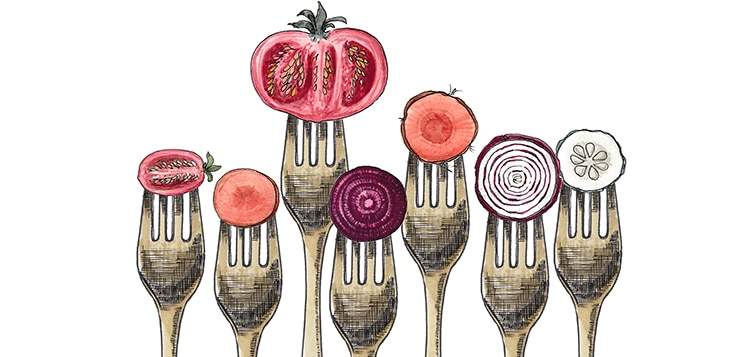Busy lifestyles often make for eating experiences that do not measure up. Remember the last time you ate in front of your desk while replying to emails. Or ran from table to stove, taking care of family during a meal. Not only do these situations often lead to choices that do not deliver nutritionally, but we also shortchange the role of food in our happiness.
The truth is that happiness is a big part of health. The pleasure we get from food goes a long way toward helping us celebrate, remember, and even soothe ourselves. Emotional eating is so often maligned, but it is actually an evolution-based process that serves up a bounty of neurochemicals designed to help us feel good.
In a world where many of us have access to an abundance of food, mindful eating can help us maintain a balance between momentary pleasure and genuine nourishment of body and mind.
The truth is that happiness is a big part of health. The pleasure we get from food goes a long way toward helping us celebrate, remember, and even soothe ourselves.
Four Steps to Savor
Consider these four steps to finding true joy in eating, by savoring both the flavor and how food makes you feel, whether at your or your friends’ table, a drive-through, or a fancy restaurant.
- Wait for hunger most of the time. Food tastes better when we’re hungry. Hunger is also the signal that it is time to eat. Just be sure not to wait too long. Getting too hungry is a set-up for unsupportive choices and overeating, none of which feel good in the long run.
- Focus. Eating is such a natural part of our lives, we can do it on autopilot. But the easiest things usually get the least attention. We often resort to choices that do not meet our overall needs. Consider all five senses—smell, touch, sight, sound, and taste—to get the most from your eating experiences.
- Think before you choose. Toss out nutrition rules and think instead about what will taste good and make you feel good, too. Check in before, during, and after a meal and trust your body.
- Eat intentionally. What is your intention? To enjoy, of course! Just remember to include feeling good now and later in your definition of enjoyment.
Start by appreciating the food’s aroma and appearance while also recognizing what it took to get your food to your plate or hand. This pause before eating fires up anticipation, which, when you finally take a bite, can offer big payback in terms of pleasure.
Then eat slowly to fully experience the food and more easily notice when you are satisfied. Instead of forcing yourself to slow down, or even count bites (heavens, no!), savoring your food automatically slows you down. It is not something we have to do, but something we want to do. And that makes all the difference.







